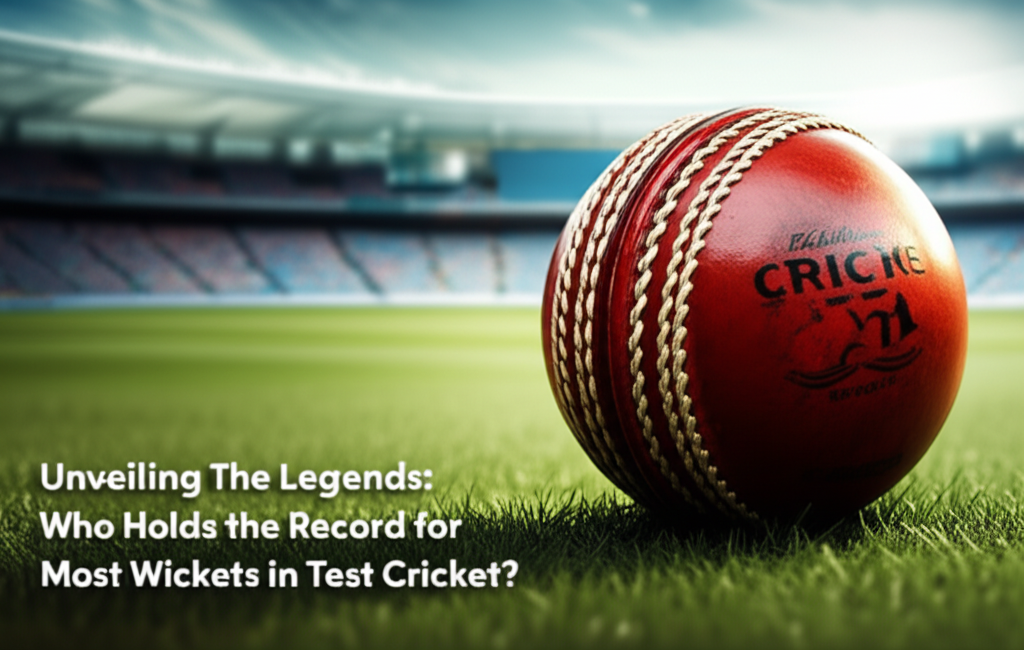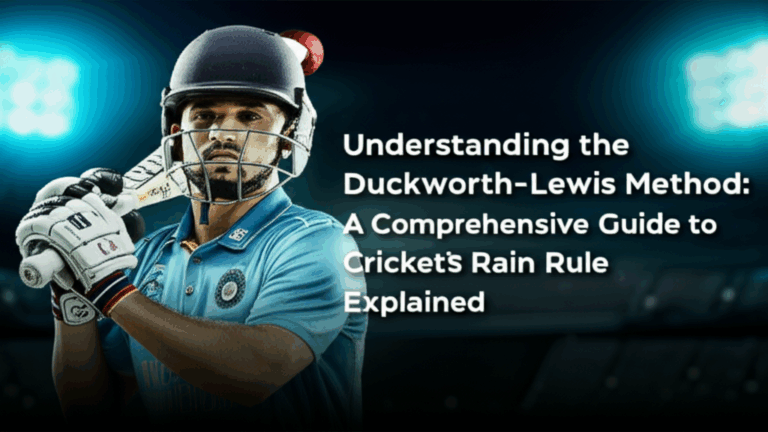
Cricket has long been a sport rich in history and culture, captivating fans with its thrilling matches and legendary players. Among the many records that define greatness in this sport, one stands out above the rest: the record for the most wickets taken in Test cricket. This record is a testament to a player’s skill, consistency, and longevity in the game. As you dive into the world of cricket, you’ll discover not just numbers but stories of perseverance, strategy, and the fierce competition that characterizes this beloved sport.
In this article, we will unveil the legends who hold the record for the most wickets in Test cricket, exploring their journeys, the challenges they faced, and the impact they had on the game. We’ll also break down the significance of this record and why it matters in the broader context of cricket history. If you’re curious about the intricate details and the players who have etched their names into cricketing folklore, you’re in the right place. Together, we’ll navigate through the statistics, the personal anecdotes, and the unforgettable moments that these legends created on the field.
Let’s embark on this journey by first understanding what makes the wicket-taking accomplishment so significant in Test cricket.
Understanding the Significance of Wickets in Test Cricket
In cricket, a wicket represents a critical moment. It signifies the dismissal of a batsman, which shifts the momentum in favor of the bowling side. In Test cricket, where matches can last up to five days, the ability to take wickets becomes even more crucial. Unlike limited-overs formats, Test cricket demands endurance, strategy, and a deep understanding of the game. Each wicket taken can change the course of a match, making it a coveted achievement for bowlers.
The record for the most wickets in Test cricket is not just about numbers. It reflects a player’s skill set, including their ability to adapt to different pitch conditions, their bowling techniques, and their mental fortitude. For aspiring cricketers and fans alike, understanding this record provides insights into what it takes to excel at the highest levels of the game.
Key Components of Wicket-Taking in Test Cricket
Bowling Techniques
Different bowlers employ various techniques to take wickets. Here are a few key methodologies:
- Fast Bowling: Fast bowlers rely on speed and bounce. They often aim for the stumps or induce edges to slip.
- Spin Bowling: Spin bowlers use rotation to deceive batsmen. They can turn the ball sharply, making it difficult to predict.
- Swing Bowling: Both fast and medium pacers use swing to move the ball in the air, confusing batsmen about its trajectory.
Match Conditions
Several factors play into how effectively a bowler can take wickets:
- Pitch Conditions: A dry, cracked pitch may favor spinners, while a green pitch may assist seam bowlers.
- Weather: Overcast conditions can help swing bowlers, while sunny days might favor batsmen.
- Team Strategy: Bowlers must work in tandem with their fielders to create opportunities for dismissals.
Physical and Mental Resilience
Test cricket is grueling, both physically and mentally. Bowlers must maintain focus and stamina over long periods. Injuries can derail careers, while mental toughness helps players cope with pressure during critical match situations.
Legends of the Game: The Record Holders for Most Wickets
Now, let’s delve into the players who have achieved remarkable success in wicket-taking. As of October 2023, the record for the most wickets in Test cricket is held by the legendary Sri Lankan spinner, Muttiah Muralitharan, and the Indian pace bowler Anil Kumble. Let’s explore more about each of these players and their contributions to cricket.
Muttiah Muralitharan
Muttiah Muralitharan, affectionately known as “Murali,” is celebrated not only for his extraordinary wicket tally but also for his unique bowling style. With a total of 800 wickets in 133 Test matches, Murali holds the record for the most wickets in Test cricket history. His career spanned from 1992 to 2010, during which he became a key figure in Sri Lankan cricket.
Murali’s exceptional ability to spin the ball, coupled with his variations, made him a nightmare for batsmen. He often combined his off-spin with a doosra, a delivery that spins the opposite way, further complicating the task for opponents. His success was not just due to raw talent; it was a result of years of hard work, dedication, and an unyielding desire to improve.
One of the most memorable moments of Murali’s career was when he took his 800th wicket against India in 2010, solidifying his status as a cricketing legend. His impact on the game extends beyond statistics; he inspired countless young cricketers around the world to pursue spinning as a viable and potent bowling option.
Anil Kumble
Another titan in the realm of wicket-taking is India’s legendary leg-spinner, Anil Kumble. With 619 wickets in 132 Test matches, Kumble is the highest wicket-taker for India and ranks third overall in Test cricket history. His career spanned from 1990 to 2008, during which he became known for his relentless accuracy and a profound understanding of the game.
Kumble’s bowling style was characterized by a flat trajectory and a subtle variation in pace, making him both effective and difficult to face. One of Kumble’s most iconic achievements came during a Test match against Pakistan in 1999, where he took all ten wickets in an innings, a feat rare in the sport. This performance is still celebrated as one of the greatest individual achievements in cricket history.
Beyond his wicket-taking prowess, Kumble was known for his sportsmanship and leadership qualities. After retiring, he continued to contribute to cricket as a coach and mentor, shaping the next generation of cricketers.
Comparative Analysis of Wicket-Taking Records
To better understand the achievements of Muralitharan and Kumble, let’s take a look at a comparative analysis highlighting their records and milestones:
| Player | Matches Played | Total Wickets | Best Bowling in an Innings | Bowling Average |
|---|---|---|---|---|
| Muttiah Muralitharan | 133 | 800 | 9/51 | 22.72 |
| Anil Kumble | 132 | 619 | 10/74 | 29.65 |
This table showcases not just the number of wickets but also other significant metrics that underline their impact on the game. Muralitharan boasts a higher total wicket count and a lower bowling average, while Kumble’s historic ten-wicket haul illustrates his capacity to dominate in crucial match situations.
Benefits and Importance of Wicket-Taking Records
The record for the most wickets in Test cricket serves several important purposes:
- Inspiration: Records inspire younger generations of cricketers to pursue excellence and emulate their heroes.
- Recognition: Acknowledging these records highlights the hard work and dedication of players, enhancing their legacies.
- Statistical Analysis: For analysts and fans, these records provide a basis for comparing players across eras, enriching discussions about the game.
Practical Applications: Learning from the Legends
As aspiring cricketers or simply fans of the game, we can glean valuable lessons from the lives and careers of Muttiah Muralitharan and Anil Kumble:
Developing Skills
Focus on honing your bowling techniques. Whether you aspire to spin or pace, understanding the mechanics of your action and practicing regularly is vital. Techniques like mastering variations, working on speed, and improving accuracy can significantly enhance your performance.
Understanding the Game
Study different match conditions and how they affect play. Learn to adapt your strategy based on the pitch, weather, and opposing batsmen. This adaptability is crucial for success in Test cricket.
Resilience and Mental Toughness
Success in cricket, especially in Test matches, requires mental fortitude. Work on developing resilience, learning to cope with pressure, and building a winning mindset, just like the legends you’ve learned about.
Frequently Asked Questions
What is Test Cricket?
Test cricket is the longest format of the game, played between two teams over five days. Each team bats twice, and the aim is to score more runs than the opponent. The format is considered the ultimate test of a cricketer’s skill and endurance.
Who is the current record holder for the most wickets in Test cricket?
The current record holder for the most wickets in Test cricket is Muttiah Muralitharan, with 800 wickets taken over his illustrious career.
What factors contribute to a bowler’s success in Test cricket?
Several factors contribute to a bowler’s success, including their bowling technique, adaptability to pitch conditions, mental resilience, and the ability to work with field placements and teammates to create wicket-taking opportunities.
How does the bowling average affect a bowler’s reputation?
A bowler’s average, calculated as the number of runs conceded per wicket taken, is a critical measure of efficiency. A lower average indicates a more effective bowler, enhancing their reputation in the cricketing community.
What can aspiring cricketers learn from Muralitharan and Kumble?
Aspiring cricketers can learn the importance of hard work, skill development, game strategy, and mental toughness from Muralitharan and Kumble. Their careers serve as blueprints for success in cricket.
How do international records influence cricketing culture?
International records, such as those for wickets taken, influence cricketing culture by inspiring new talent, creating rivalries, and becoming talking points among fans, analysts, and players alike. They contribute to the rich tapestry of cricket history.
Conclusion
In conclusion, the record for the most wickets in Test cricket is not just a number; it represents the culmination of talent, hard work, and a profound understanding of the game. Legends like Muttiah Muralitharan and Anil Kumble have set benchmarks that inspire future generations of cricketers and enthusiasts alike. By analyzing their careers, we can glean insights into what it takes to excel in this beautiful game.
As you continue to explore the rich history of cricket, remember that every wicket tells a story—one of strategy, skill, and sometimes, pure luck. So, whether you’re playing cricket in your backyard or cheering for your favorite team, keep these legends in mind as they embody the spirit of the sport. Now, take these lessons to heart, and who knows? Perhaps one day, you could be the one setting records and inspiring future players!






